Walking the Camino de Santiago
- Return flights
- 7 nights in 3 & 4-star hotels
- 13 included meals: 7 breakfasts, 2 lunches, 4 dinners
Mon-Fri: 9am - 6pm Saturday: 9am - 5pm Sun & BH: Closed
Mon-Fri: 9am - 6pm Saturday: 9am - 5pm Sun & BH: Closed
Cherry blossom season, marked by the beautiful "Sakura" flowers in Japan, is a time of immense beauty and cultural significance. Each spring, these delicate flowers transform the landscapes of Japan with a vibrant patchwork quilt of colours, captivating locals and visitors alike. Here are 15 interesting facts about cherry blossom season in Japan:
Cherry blossom season in Japan is a much-anticipated time, beginning in late March and extending into early April, though the exact dates vary depending on the region and weather conditions of course.
The timing of the appearance of cherry blossoms can be highly unpredictable, influenced by temperature fluctuations, rainfall, and geographical factors like altitude. A warmer winter may cause earlier blooms, while a cold snap can delay them. The Japan Meteorological Corporation releases annual forecasts, highlighting bloom progression across the country. This information is crucial for residents and visitors planning to attend a cherry blossom festival.
In their first update for 2025, the blooms are expected to emerge in the south from 25 March and will spring up across the northern reaches from 30 April. This marks great news if you’re booked on our March and April departures, and one of the many benefits of travelling across Japan – you’ll increase your chances of spotting this wondrous natural sight.
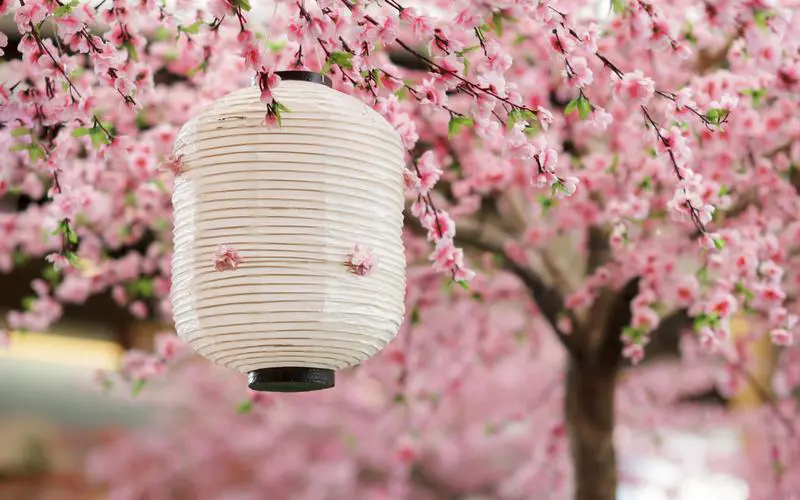
Throughout Japan, Sakura Matsuri are a highlight of spring. These festivals bring communities together with vibrant food stalls, traditional performances, and lantern-lit hanami (flower viewing) gatherings. In Tokyo, the Ueno Cherry Blossom Festival draws thousands with its stunning views and lively atmosphere.
Ueno park is home to 1,200 cherry blossom trees and it’s thought that over 400 years ago, the priest Tenkai brought cherry blossoms from Mount. Yoshino and planted them here in the park. The actual dates for the festival vary depending on the appearance of the trees in bloom, but regardless of when you visit Tokyo, spring in Japan is an enchanting time to explore.
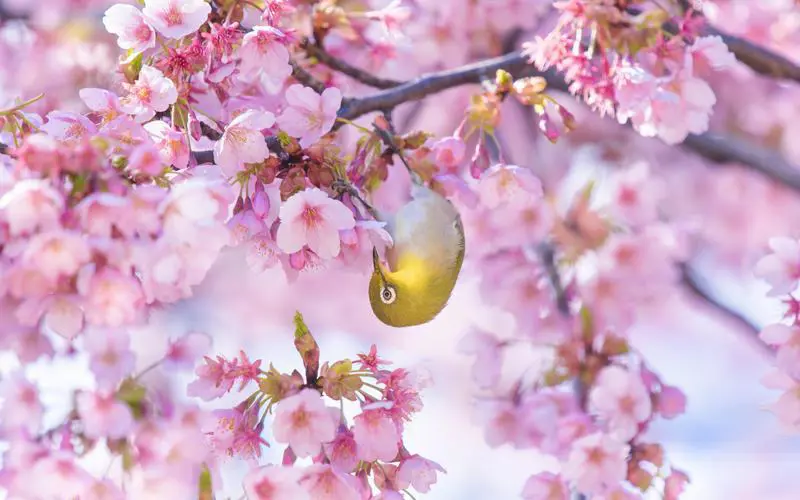
In Japan, cherry blossom festivals draw over 63 million people every year. From locals enjoying hanami picnics with friends to international tourists experiencing the vibrant cultural events, the festivals offer something for everyone, and a great opportunity to celebrate both nature and community.
Meanwhile, smaller towns showcase local traditions, offering an intimate glimpse into Japan’s cultural diversity.
Cherry blossom festivals are not confined to Japan. The International Cherry Blossom Festival in Macon, Georgia, USA, celebrates the beauty of over 350,000 Yoshino cherry trees each spring, reflecting the global admiration for sakura. Other cities, like Washington D.C., and Vancouver, host their own cherry blossom events, reinforcing the tree’s role as a universal symbol of beauty and renewal.
Japanese parks and gardens transform into magical wonderlands during sakura season with night-time illuminations, known as yozakura. Trees are bathed in soft, ambient lighting, enhancing their delicate beauty and creating enchanting views. Famous spots like Maruyama Park in Kyoto and the Meguro River in Tokyo attract crowds for these serene after-dark experiences, offering a unique way to enjoy the blossoms.
As part of the Japan Revealed tour, you spend three days in Kyoto, and will tour the stunning Heian Shrine and gardens, and the famous Geisha district of Gion and its cobblestone streets filled with teahouses. Both these locations are great spots for viewing the trees in bloom.
Some people consider Kyoto as being a better spot for a more traditional and serene cherry blossom experience, especially the ancient gardens and temples here which make the most picturesque backdrop.
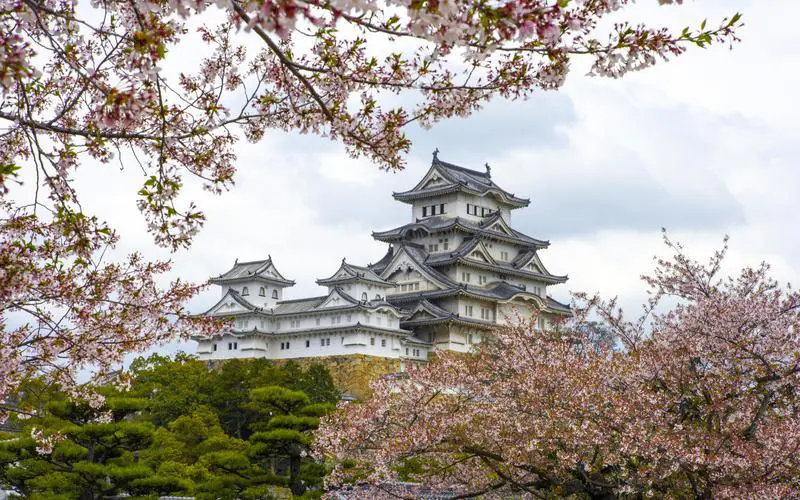
The tradition of flower viewing, or hanami, has been cherished for over a millennium. Originating during the Nara period (710–794), it began as an aristocratic pastime under blooming cherry and plum trees. By the Heian period (794–1185), hanami had evolved to include the general public, becoming a symbol of Japan’s reverence for nature and its fleeting beauty.
Cherry blossoms feature prominently in historical art, literature, and poetry. In the Edo-period woodblock prints, the blossoms are often depicted alongside famous landscapes. They also hold a central place in traditional crafts like origami and ceremonies such as tea gatherings, where their symbolism of impermanence adds depth to the rituals.
Make sure you look out for the many artworks and experiences that include these important symbols during your tour.
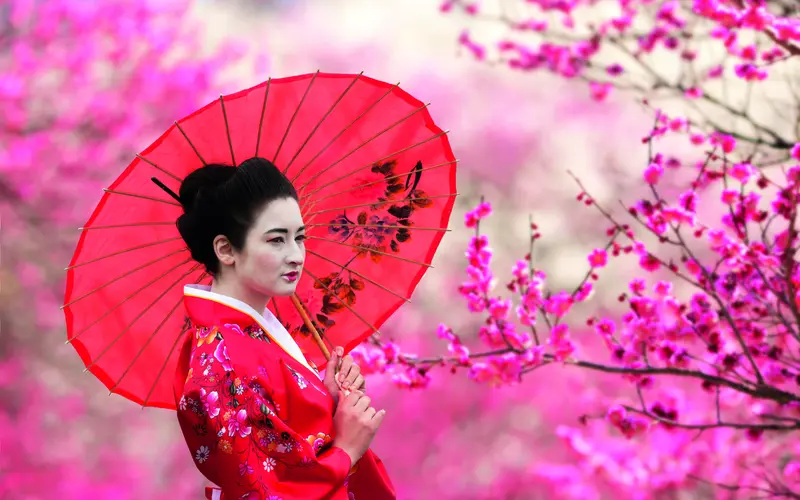
Notable examples include the United States, which received 3,000 trees in 1912 to strengthen diplomatic ties, and Germany, where cherry trees were planted along the former Berlin Wall to symbolise unity after reunification. Similar gestures have been made to countries like Turkey, Canada, Australia, and the Philippines, often commemorating significant anniversaries or diplomatic milestones.
Sakura embodies profound meanings in Japanese culture, symbolising renewal, the fleeting nature of life, and the importance of cherishing the present moment. These themes resonate in both Buddhist philosophy and modern Japanese society, where cherry blossoms serve as a reminder of life's beauty and transience.
Japan is home to more than 200 varieties of cherry trees, each offering a distinct charm. The Somei Yoshino, with its pale pink, nearly white flowers, is the most widely cultivated. However, rarer varieties like the green-blossomed Gyoiko and the double-flowered Yaezakura add diversity to the season’s palette, delighting enthusiasts seeking unique blooms.
On a Just You escorted solo tour to Japan, a visit to the Shin’en Gardens within the Heian Shrine in Kyoto, will reveal over 150 weeping cherry trees known as yaebeni shidare-zakura. The west of the gardens are a tranquil space where the pretty reflections of the blossoms in the ponds and across the bridges are the most magnificent sights to behold.
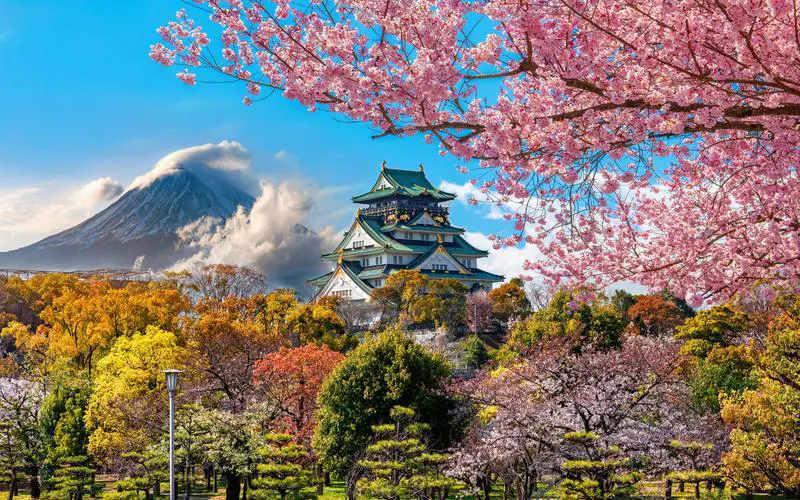
Japanese cherry trees display a remarkable range in height, spanning from 15 to 40 feet depending on the species and growing conditions. This diversity enhances the beauty of the landscapes they adorn, from smaller ornamental trees in urban parks to the towering Prunus serrulata varieties, which can reach heights of up to 40 feet. The tallest varieties, often found in expansive gardens and traditional temple grounds, create a dramatic and picturesque backdrop, showcasing the incredible versatility of these iconic trees.
Cherry blossoms bloom for the briefest of time – just 7–10 days - capturing their delicate essence. This short-lived spectacle underscores their poetic symbolism. Similarly, most cherry trees have a lifespan of 20–30 years, though some, like the ancient Jindai Zakura tree in Yamanashi Prefecture, are exceptions, living for over 1,000 years with careful preservation.
Sakura mochi, a sweet rice cake wrapped in a pickled cherry leaf, and sakura tea, made by steeping cured blossoms, are beloved seasonal treats. The curing process, shiozuke, preserves the delicate petals with salt, infusing them with a subtle, aromatic flavour.
A tea ceremony is the perfect way to delve into Japanese culture and as part of Just You’s 12-day tour, you will take part in a traditional Uji tea ceremony. A tea master performs ritual movements as they prepare matcha tea while you follow their movements. It’s a fantastic ceremony that promotes mindfulness, harmony and wellbeing.
Cherry blossoms, or Sakura, hold a special place in Japanese culture, symbolising renewal, beauty, and the transient nature of life. At Just You, we invite you to embark on a journey to discover the essence of Japan.
Delve into the magic of on a tour of Japan with Just You, which offers an immersive experience, allowing you to explore the rich history, vibrant culture, and stunning landscapes of this captivating country.
The cherry blossom season in Japan typically occurs between late March and early April. However, the exact timing varies depending on the location and weather conditions.
Some popular destinations for cherry blossom viewing in Japan include Tokyo, Kyoto, Osaka, Hiroshima, and Nara. Each offers unique experiences and picturesque settings for enjoying the cherry blossoms.
The cherry blossom season in Japan usually lasts for about one to two weeks, although this can vary depending on the region and weather conditions. Peak bloom typically lasts for only a few days.
It's recommended to dress in layers during cherry blossom season in Japan, as the weather can be unpredictable. Light, breathable clothing is ideal, along with comfortable walking shoes for exploring parks and gardens.
Yes, it's essential to be respectful of the natural surroundings and other visitors. Avoid climbing on trees or shaking branches. Additionally, it's customary to remove shoes before sitting on picnic mats.
Yes, photography is a popular activity during cherry blossom season in Japan. Be sure to capture the beauty of the blossoms, but also take time to enjoy the experience without being behind the camera the entire time.
Cherry blossom season is very popular and Japan experiences a significant influx of visitors, with popular spots often crowded. It's advisable to plan ahead.
From the natural beauty of Mount Fuji to the spectacular skyline of Tokyo, enigmatic Japan offers a unique holiday experience. Discover ancient temples, scenic landscapes and travel on the famous Bullet Train.
Experience iconic American cities and explore historical sites and key moments that built the modern USA
A spectacular journey on the iconic Rocky Mountaineer train is the highlight of this incredible ultimate journey through Western Canada, from Calgary and sparkling Lake Louise to beautiful Vancouver.
World-famous monuments, delicious cuisine and intriguing history combine to make Turkiye a traveller's dream come true. We'll discover the top highlights and immerse in culture on this fascinating tour.